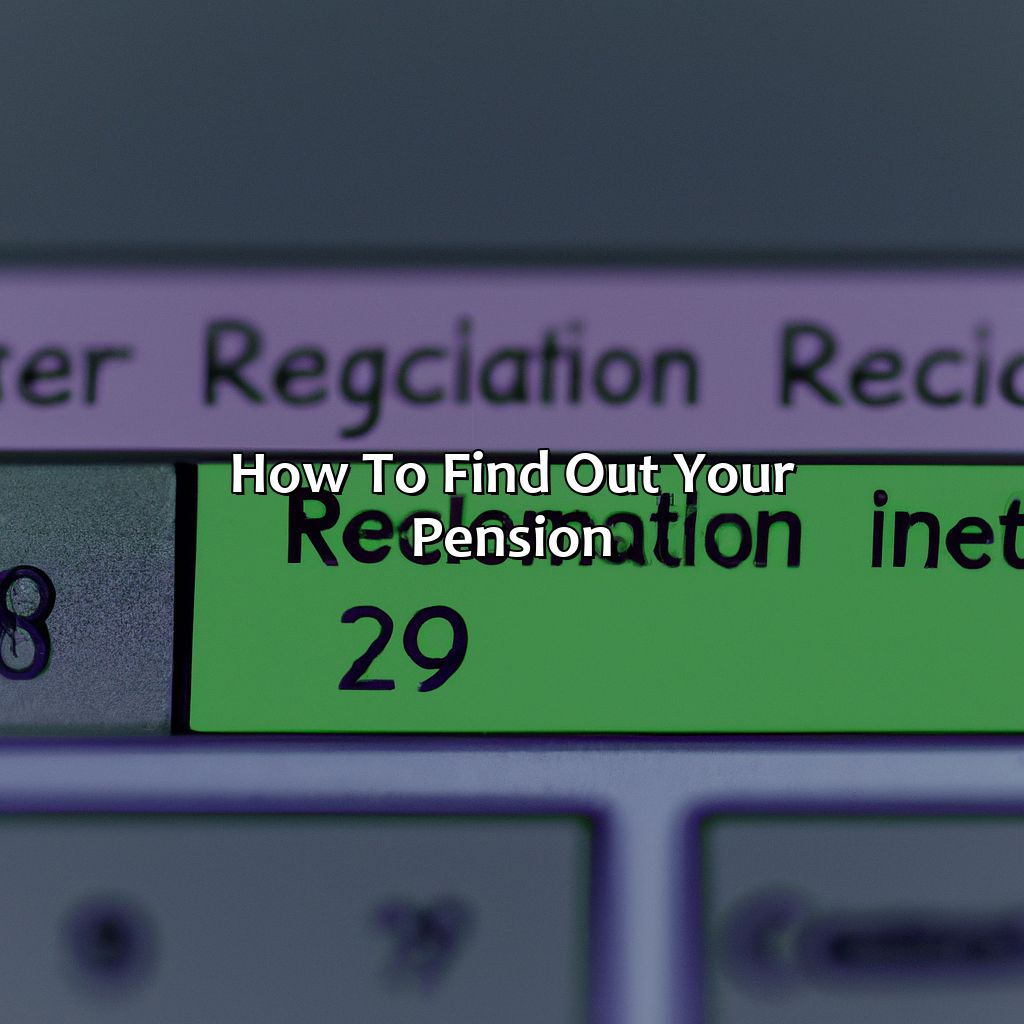How To Find Out Your Pension?
Key Takeaway:
- Understanding your pension plan is essential to securing your financial future; ensure you know the type of pension plan you have and how pension calculations are made to determine the amount you are owed.
- Contact your former employers and pension administrators to find information on your pension and consider using online tools for convenience.
- When reviewing pension statements, pay attention to key information such as accrual rates and vesting schedules and consider early withdrawals and tax implications when planning for retirement.
Do you want to know how to make the most of your pension? You can be empowered to ensure you are getting the best deal for your future with this simple guide. We’ll explain exactly how you can find out what pension you have, the benefits it provides and any additional options available.
Understanding Your Pension Plan
To make the most of your pension plan, it’s important to learn about the different types and calculations. This’ll help you decide which plan you have and how your retirement income will be calculated. Let’s dive in!
Types of Pension Plans and Pension Calculations can be confusing. But with a bit of knowledge, you can understand the complexities of your pension plan.
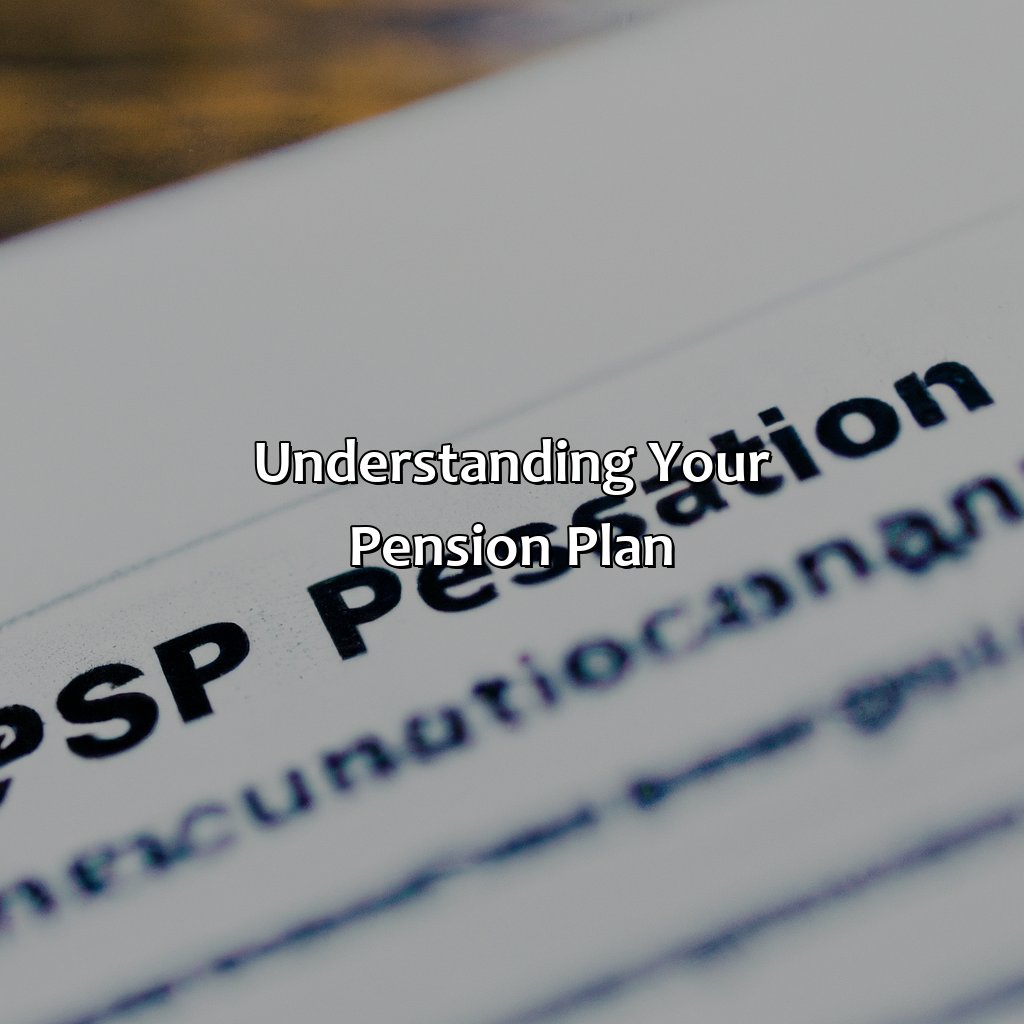
Image credits: retiregenz.com by Adam Woodhock
Types of Pension Plans
Different types of retirement plans are offered to employees, each with its own set of advantages and limitations. A qualified financial advisor can provide professional insight into which plan could be the best fit for your personal financial goals and situation.
| Plan | Description |
| Defined Benefit Plans | Provide a guaranteed amount of income in retirement based on an employee’s salary history, years of service, and age. |
| Defined Contribution Plans | Investment accounts in which both employers and employees contribute regularly. The account grows depending on market performance and investment decisions made by the employee. |
| Cash Balance Plans | A type of defined benefit plan that combines features from both defined contribution and traditional pension plans. |
It’s essential to note that some employers offer more than one type of retirement plan, providing employees with a variety of options based on their unique financial needs. A recent survey found that nearly half (48%) of American workers were unsure how much they need to save for retirement. (Source: Transamerica Center for Retirement Studies) Get ready to do some math, but don’t worry, it’s not like you need a pension plan or anything.
Pension Calculations
Calculating your retirement earnings is a crucial process that requires careful consideration. Understanding the intricacies of your pension plan can be challenging but essential in ensuring that you are financially secure in your retirement years.
To begin with, calculating your pension plan involves several factors such as the number of years you have contributed, your average salary during these years and the specific provisions of your pension scheme. By utilizing these variables, you can arrive at an approximate calculation for your retirement benefits.
It’s essential to keep in mind that different types of pension plans have their unique methods of calculating retirement benefits. These primarily include defined benefit plans and defined contribution plans, which feature varying benefit formulas based on employee contributions and investment returns.
It’s always advisable to consult the pension plan documentation provided by your employer or Pension Fund Regulatory Authority (PFRA) or talk to a professional financial advisor before making any significant decisions. If you’re wondering how to get a pension, seeking professional guidance can be a good starting point.
According to Investopedia, a defined benefit plan is distinct from a defined contribution plan since it offers guaranteed payouts based on age, salary history and tenure whereas the latter specifies contributions made to personal accounts with no guarantee of future payouts.
Overall, understanding how to calculate your pension benefits is fundamental and requires careful analysis involving multiple factors unique to each individual s particular pension scheme. Finding your pension information is like playing a game of hide and seek, except you’re seeking financial security instead of your childhood friends.
Finding Your Pension Information
Locate your pension info quickly and easily! Follow these steps:
- Reach out to your ex-employer
- Consult pension administrators
- Utilize online tools
These subsections will provide a plethora of options. Then, you can uncover all the details regarding your pension.
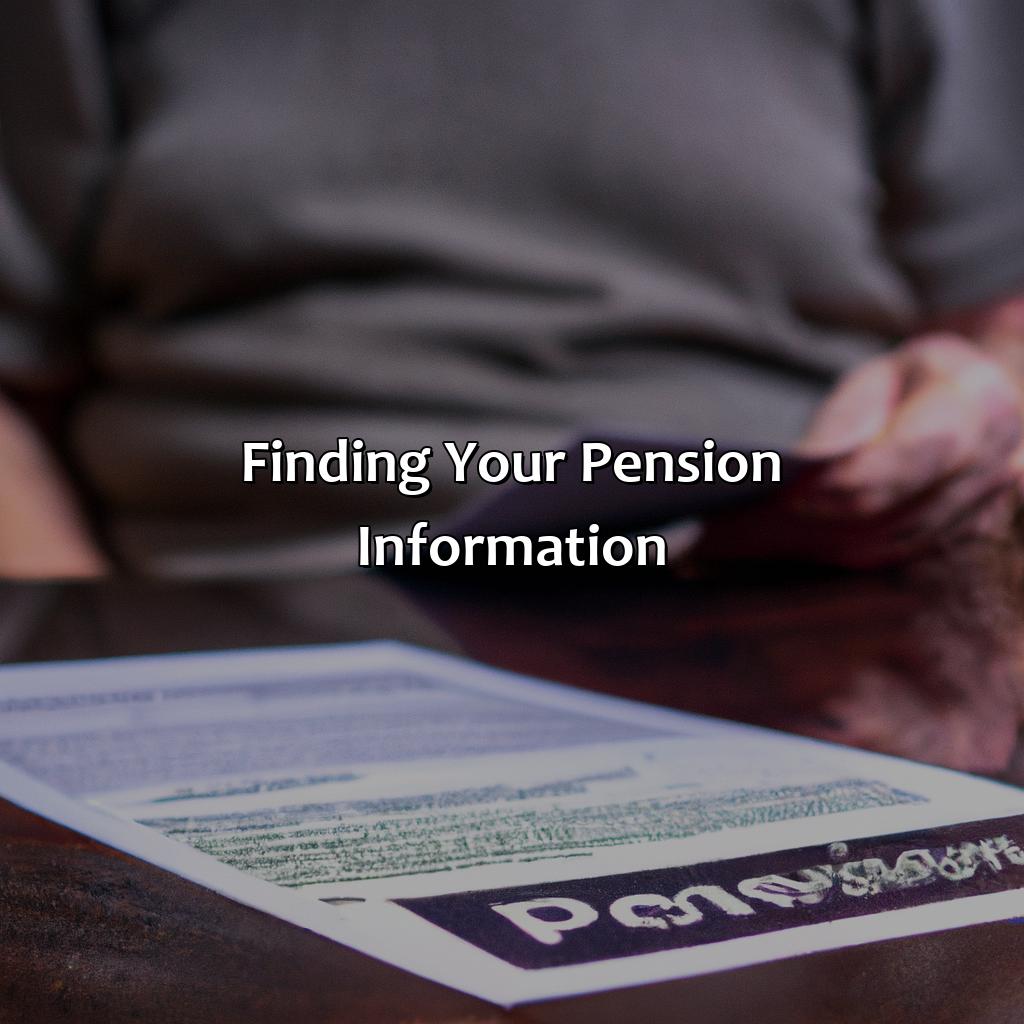
Image credits: retiregenz.com by James Woodhock
Contacting Your Former Employers
When it comes to retrieving your pension information, reaching out to past employers is crucial. Locate their contact details via online searches or the company directory. Consider sending a polite email or letter that requests pertinent information such as plan details and entitlements. It’s wise to be persistent, follow up with calls or messages, and seek clarity on matters you don’t understand. Remember that old employers may take time to respond, so be patient and keep records of all correspondence.
In addition to direct contact with past employers, you can find pension data through government organizations like the Pension Benefit Guaranty Corporation (PBGC) or the Department of Labor (DOL). Both agencies maintain databases detailing employer-sponsored retirement plans while offering guidance on pension regulations and consumer rights. Don’t overlook independent retirement counselors who can offer insights into your financial future.
Don’t let lack of knowledge become a barrier to claim what’s yours get familiar with different sources of pension information, including contacting previous employers, government entities and seeking professional assistance if required. The sooner you act towards securing your retirements funds, the better for your peace of mind and financial stability in later years.
Go ahead, call your pension administrator. It’s like dialing the government’s version of a suspense thriller.
Checking with Pension Administrators
To find out your pension information, it is helpful to consult with the individuals responsible for managing your pension. Get in touch with a pension administrator to get accurate and up-to-date information about your pension plan. They can also help answer any questions you may have and provide guidance on how to proceed.
When contacting a pension administrator, make sure to have all relevant personal information on hand, such as your name and social security number. You may also need to provide details about the specific company or organization that manages your pension plan.
If you’re having trouble locating contact information for a pension administrator, try reaching out to your former employer or union representative for assistance. Alternatively, you can try searching online directories or contacting government agencies that oversee pensions.
Pro Tip: Keep comprehensive records of all correspondence with your pension administrators, including phone calls and emails, in case any disputes arise in the future. Wondering about how much you pay into your pension? Check out the informative article on RetireGenz!
Don’t worry about losing your pension information, just let the internet do the forgetting for you.
Using Online Tools
To Locate Your Pension Details Online
With the advancement of technology, it’s common to use online tools to find your pension information. On several websites, you can find what you are looking for.
Many online pension finding tools allow easy access by signing in through your employer or other authorized middle-managing bodies and agencies. These websites make it user-friendly and comfortable to navigate.
Moreover, some have recently implemented chatbots to automate customer service inquiries seamlessly and conveniently.
Consider utilizing previous accounts on pension schemes that you may have subscribed to in the past or exploring helpful YouTube videos posted by experts in the field.
In addition, Seeking guidance from a specialized financial professional who specializes in pensions might be useful for more complicated scenarios. It is worth engaging with their expertise if you want tailored support for your unique situation.
Reading your pension statement is like reading a foreign language, except the only words you recognize are ‘taxes‘ and ‘retirement‘.
Understanding Pension Statements
Are you having trouble understanding your pension statement? Let’s explore how to correctly read and interpret it, and how to identify the key information you need to look for. This will help you plan for your retirement! We have two sections:
- Understanding Pension Statements
- Interpreting Your Pension Statement
Let’s get started!
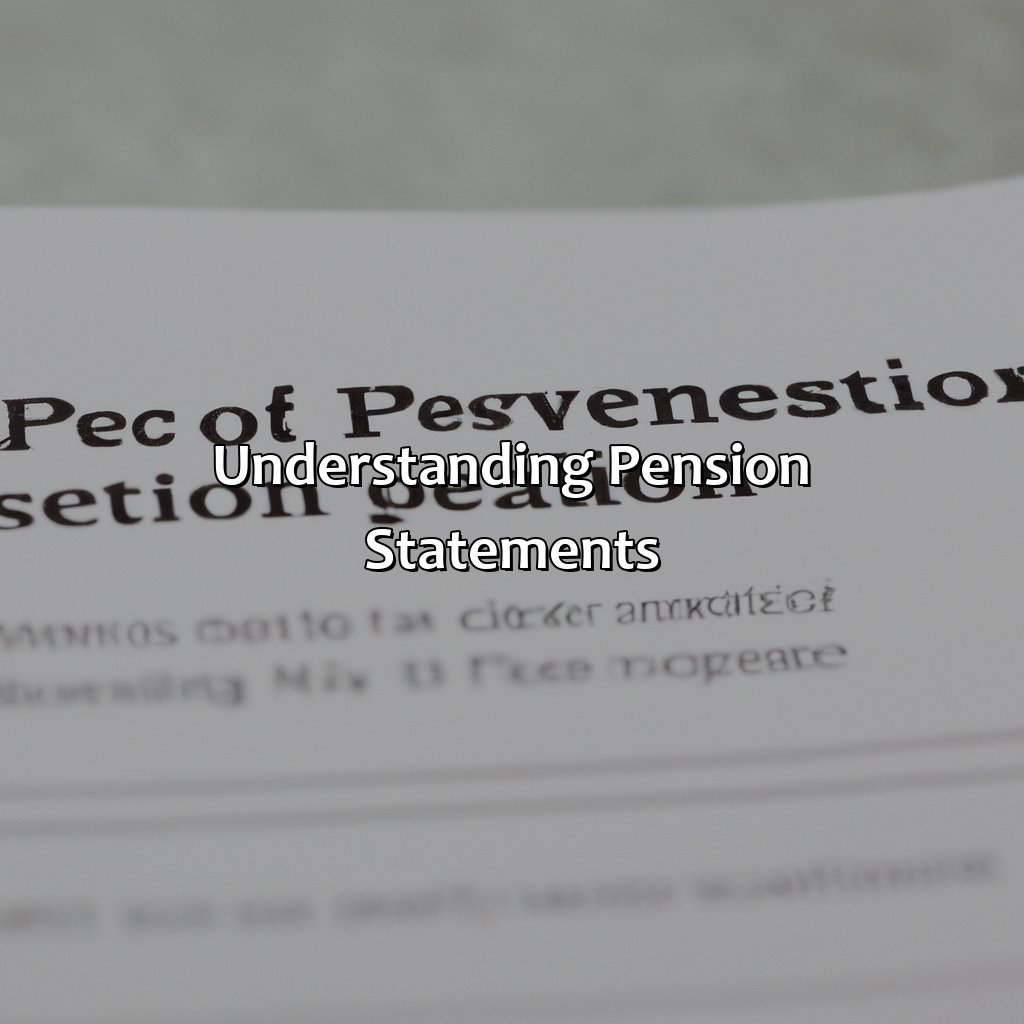
Image credits: retiregenz.com by Harry Washington
Key Information to Look for
When reviewing pension statements, it’s important to identify the significant data points. Key indicators to look for include:
- your current retirement plan balance
- contributions made by your employer and yourself
- vesting status
- any fees or penalties assessed against your account
Additionally, take note of any fees or penalties assessed against your account.
Understand different terms mentioned on the statement such as “vesting” which indicates how much of the employer contribution is available for you in case you leave the job prematurely. Check the growth rate of investments and ensure they align with your desired risk tolerance level. Verify that all personal information (address, contact data) is accurate.
It’s critical to understand how often you receive your pension statement and what period it covers so that you can monitor trends and be proactive in correcting mistakes if any noticed. Regularly reviewing pension statements ensures a stable financial future by preventing financial losses due to miscalculations or inaccurate information.
If you are wondering how to claim your civil service pension, understanding your pension statement is a great first step.
To avoid any confusion while reviewing any terminology used on the statement, consult with an accredited professional who can explain every aspect of your statement in detail based on its layout structure. By understanding each section of your pension statement, you will have better control over retirement planning while ensuring long-term financial stability.
Why decipher hieroglyphics when you can interpret your pension statement instead?
Interpreting Your Pension Statement
When trying to understand your pension statement, you may feel overwhelmed with the jargon and figures. To make sense of it all, start by deciphering the projected benefits section. Use retirement date estimates to determine how much money you may receive when you eventually retire. In addition, take note of any vested rights, matching contributions or other special features.
Next, examine the contribution history section for information about your current balance and total payments made over time. Keep an eye out for any irregularities like missing contributions or incorrect deductions.
Don’t forget to review the fee sections as well. These will detail all expenses related to managing your account, including investment management fees and insurance charges.
To ensure that you get the most out of your pension plan, consider taking advantage of employer-matching contributions. If available, set up automatic contributions into your account each pay period. This will help maximize your potential earnings while also promoting long-term investment goals.
Understanding your pension statement can be a daunting task, but with a little effort and guidance it is possible to break down even the most complicated documents into understandable pieces. Retirement planning with your pension: because it’s never too early to start panicking about the future.
Planning for Retirement with Your Pension
Planning for retirement with your pension is essential. Look at your pension benefits, contemplate early withdrawals, and comprehend the tax implications. Each subsection offers a distinct way to be sure that you understand your pension benefits, early withdrawal options, and how taxes alter your retirement savings.
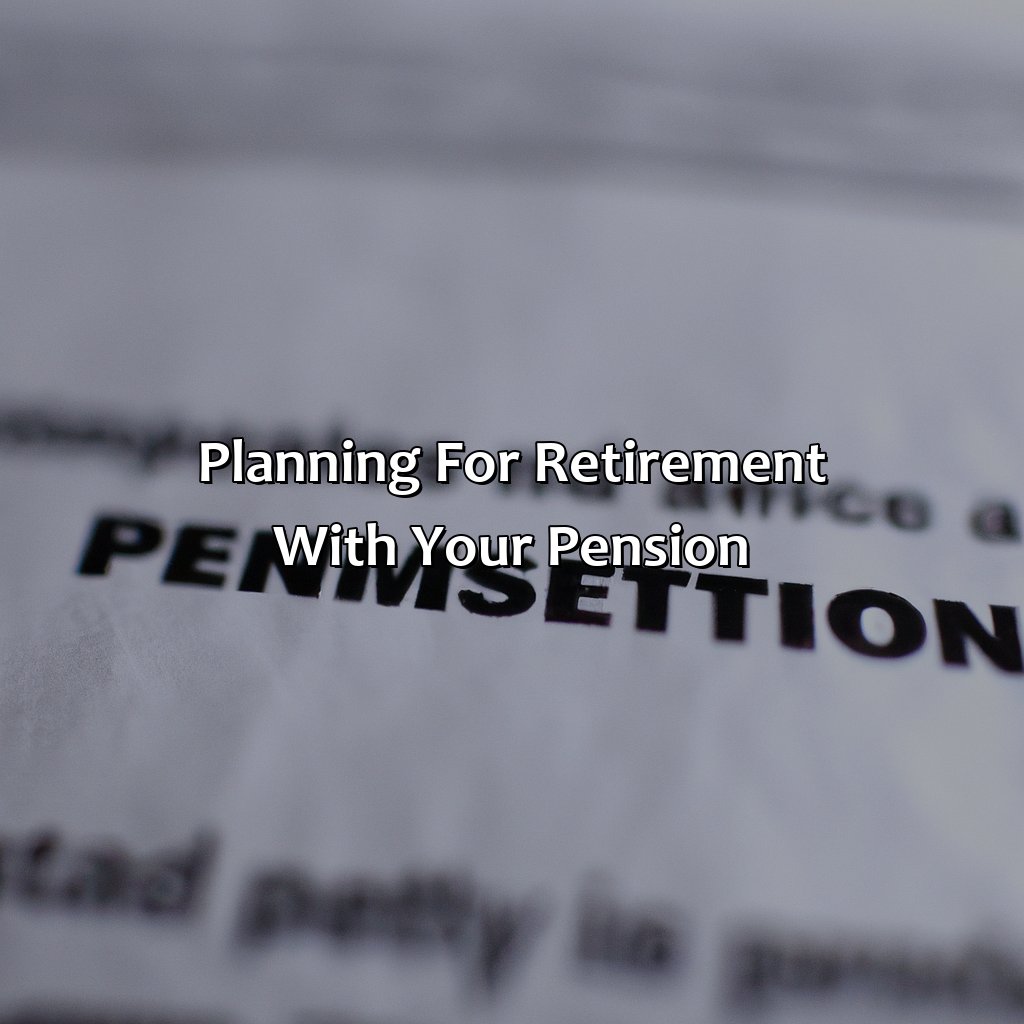
Image credits: retiregenz.com by Harry Washington
Reviewing Your Pension Benefits
Understanding the Pension Scheme
It is crucial to comprehend your pension scheme for a stress-free retirement. Knowing how it works, calculating the benefits and long-term goals can help you make informed decisions. Customized offerings exist, such as salary sacrifice or employer contributions. Analyzing and comparing the available options can provide better clarity on how to find your pension information and the schemes’ effectiveness.
Approaches to Estimate Pension Benefits
Several pension calculators are readily available, simplifying otherwise complicated mathematical calculations. These calculators estimate your annual income based on your current investment amount and monthly contributions. This approach helps determine if you are meeting your financial objectives with respect to retirement savings.
Exploring Unique Factors in Your Pension Scheme
There might be additional parameters that need consideration in your pension scheme. For instance, understanding under which circumstances your beneficiaries will receive the benefit amount after you pass away could determine whether this is an efficient savings plan. Further aspects could include limitations of payments or potential tax implications. If you are unsure about how to check your pension, consult with a financial advisor.
An Inspiring Tale
An individual who started their career without any prior knowledge of pension plans reached their early-retirement age with insufficient funds. They regretted not taking steps earlier to understand how their investments were being used and regretted not making larger contributions at an earlier stage. Taking control of your pension scheme sooner rather than later is paramount to ensure a comfortable retirement period. If you are looking for information on how to claim Old Age Pension in the UK, RetireGenZ can help.
Before you consider early withdrawals from your pension, remember: you don’t want to end up retiring to your parents’ basement.
Considering Early Withdrawals
For those contemplating withdrawing from their pension fund early, it’s important to understand the potential consequences. Early withdrawals may result in penalties or a reduced payout upon retirement. It’s essential to research and fully comprehend the terms of your pension plan before making any decisions regarding early withdrawals.
Furthermore, many pension plans have strict guidelines regarding early withdrawals. This can include limitations on the reasons for withdrawal and age requirements. Before considering an early withdrawal, individuals should review their specific plan documents and speak with a financial advisor to fully understand how to value a pension and how it will impact their retirement plan.
It is also crucial to consider alternative options before resorting to an early withdrawal. These options can include reducing expenses or increasing income to avoid tapping into retirement savings prematurely.
In recent years, there have been numerous instances of individuals depleting their pensions through early withdrawals and facing financial difficulties in their later years. Therefore, it is crucial to carefully weigh the risks and benefits of each decision before opting for an early withdrawal from your pension plan.
“Death and taxes may be certain, but understanding the tax implications of your pension can make the latter slightly less depressing.”
Understanding Tax Implications
Tax Implications of Your Pension Fund
The tax implications of your pension fund can be quite complex and vary depending on many factors. When withdrawing your pension, you will have to consider how much of it will be taxed, as well as other aspects such as the timing and frequency of withdrawals. It is important to consult with a financial advisor or tax professional to fully understand how a pension is paid out and the potential tax implications.
If you withdraw too much too quickly, you may face higher taxes or penalties for early withdrawal. Additionally, changes in tax laws or regulations can affect how much you are taxed on your pension income. Being aware of these potential complications will help you plan accordingly and protect your retirement funds.
Wondering how to get your pension from a previous employer? Keep these things in mind to ensure proper withdrawal and protection of your retirement funds.
It is also worth noting that different types of pensions can have different tax implications. For example, a defined contribution plan may have different rules around taxation than a defined benefit plan. Understanding the specifics of your own pension plan is key to making informed decisions about how to handle taxes in retirement. If you are wondering what is the asset test for the aged pension, it’s important to do your research and get a clear understanding of the eligibility criteria.
Don’t let lack of knowledge regarding taxes on pensions prevent you from maximizing your retirement funds. Speak with an expert today to ensure that you don’t miss out on important opportunities or suffer unnecessary losses due to improper planning.
Some Facts About How To Find Out Your Pension:
- ✅ Your pension information can be found on your annual statement or by contacting your pension provider. (Source: Money Advice Service)
- ✅ The UK government offers a free pension tracing service for those who have lost track of their pension providers. (Source: UK Government)
- ✅ If you’ve worked for multiple employers, you may have multiple pensions to keep track of. (Source: PensionBee)
- ✅ Your state pension age can be checked on the UK government website. (Source: UK Government)
- ✅ It’s important to regularly review and update your pension plans to ensure you’re on track for your retirement goals. (Source: Money Super Market)
FAQs about How To Find Out Your Pension?
How can I find out my pension?
There are a few ways to find out your pension:
- Contact your pension provider and ask for a statement of your pension benefits.
- Check your annual pension statement, if you receive one.
- Use an online pension calculator to estimate your pension.
Can I find out my state pension online?
Yes, you can find out your state pension online by using the government’s online service. You’ll need your national insurance number and other personal information, such as your date of birth and address.
What is a pension forecast, and how can I get one?
A pension forecast is an estimate of how much you will receive from your pension when you retire. You can get a pension forecast from your pension provider or the government. You’ll need to provide personal information, such as your national insurance number, to get a pension forecast.
How often should I check my pension?
You should check your pension regularly, at least once a year, to make sure that it’s on track to meet your retirement goals. You should also check your pension if you change jobs or if there are any changes to your pension plan.
What should I do if I think there’s an error in my pension statement?
If you think there’s an error in your pension statement, you should contact your pension provider and ask for an explanation. You may also want to seek advice from a financial advisor or a pension specialist.
What happens if my pension provider goes out of business?
If your pension provider goes out of business, your pension should be protected by the pension protection fund. This will cover most, but not all, of your pension benefits. You may also be able to transfer your pension to another provider.
